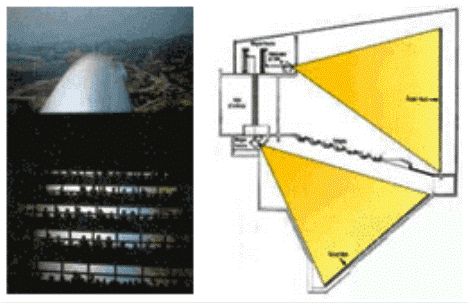|
|
This topic comprises 3 pages: 1 2 3
|
|
Author
|
Topic: My first IMAX experience
|
|
|
|
|
|
|
|
|
|
|
Robert Stawiarski
Film Handler
Posts: 62
From: MW
Registered: Aug 2003
|
 posted 09-02-2005 12:28 PM
posted 09-02-2005 12:28 PM



-The SR uses two projectors for 2D when a changeover is involved -- this allows the SR theatres to play the longer DMR films without having a fully upgraded QTRU.
-There is also an SR Dome theatre, which uses a single projector obviously. The one I know about is at the Science Station in Cedar Rapids, IA, but there might be others.
-Also, there are Classic 3D systems, which is two Classics side-by-side like an SR setup. The first IMAX 3D system was at the CN IMAX Theatre in Vancouver, and that uses two Classics.
You can see both of the above in the "Post your booth pictures!" thread at the 1570.com Technical Issues forum.
The rest of your list looks correct, but I am not familiar with Ridefilm or Magic Carpet.
Oh, and since I recently have ridden this... Soarin' Over California at Disney's California Aventure and its sister ride Soarin' at Epcot, use the HD Dome system. I believe Iwerks was originally supposed to install the California system, but Disney decided to switch to IMAX when they were unable to.
| IP: Logged
|
|
|
|
|
|
|
|
|
|
|
|
|
|
|
|
|
|
|
|
|
|
All times are Central (GMT -6:00)
|
This topic comprises 3 pages: 1 2 3
|
Powered by Infopop Corporation
UBB.classicTM
6.3.1.2
The Film-Tech Forums are designed for various members related to the cinema industry to express their opinions, viewpoints and testimonials on various products, services and events based upon speculation, personal knowledge and factual information through use, therefore all views represented here allow no liability upon the publishers of this web site and the owners of said views assume no liability for any ill will resulting from these postings. The posts made here are for educational as well as entertainment purposes and as such anyone viewing this portion of the website must accept these views as statements of the author of that opinion
and agrees to release the authors from any and all liability.
|

 Home
Home
 Products
Products
 Store
Store
 Forum
Forum
 Warehouse
Warehouse
 Contact Us
Contact Us




 Printer-friendly view of this topic
Printer-friendly view of this topic








![[Cool]](cool.gif)
![[Frown]](frown.gif) I've been trying for the past two days to locate the staff from the Entergy IMAX in New Orleans to make sure they're ok.
I've been trying for the past two days to locate the staff from the Entergy IMAX in New Orleans to make sure they're ok.
![[Smile]](smile.gif)

![[Big Grin]](biggrin.gif)



